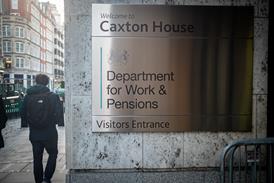Research by environmental data provider CDP indicates an eight-fold rise in the number of companies around the world putting a price on their carbon emissions.
More than three quarters of the energy and utilities sectors’ market capitalisation currently apply a monetary value to their carbon output. China, which accounted for 40 per cent of global carbon dioxide emissions in 2014, has witnessed a 40 per cent hike in domestic companies using internal carbon pricing over the last year.
While the rise in carbon pricing usage is broadly viewed as a positive development for schemes, the myriad of pricing methods adopted by businesses may limit an investment manager’s ability to grasp the value of a company’s carbon footprint.
Trustees need to understand exactly what their investment managers are doing, in terms of using this information within their portfolio construction process
Jignesh Sheth, JLT Employee Benefits
Schemes looking to fulfil their funding as well as their environmental, social and governance objectives will nevertheless hope to make use of greater transparency over their investments.
Scrutiny will continue to grow
The application of financial value to carbon represents an increase in the sophistication of corporate governance, and will improve the ability of schemes to scrutinise the ESG worth of their investments.
Nicolette Bartlett, director of carbon pricing at CDP, said that larger institutional investors place particular emphasis on assessing the governance standards of potential investments.
“Institutional investors have become more insistent on using it themselves… to run their portfolios against carbon pricing and to look at what potential carbon value is at risk,” she said.
CDP’s research indicated heightened usage of carbon pricing in China and in parts of the Americas, including Canada, Mexico, Chile, Colombia and Peru.
While Bartlett was enthusiastic about the findings of the report, she called upon companies to do more to disclose their ESG performance over lengthier time periods.
“I think investors will start scrutinising those companies a bit more… I think companies will start disclosing more around how they see this changing in the future, medium to long-term, because they don’t disclose enough details in that space at all,” she said.
There is more than one way to price carbon
There is no singular approach to carbon pricing. The value of a company’s emissions is contingent upon location, as well as legal and political attitudes, according to Richard Mattison, chief executive of sustainability risk consultancy Trucost.
“It depends on the country, the regulatory regime, the policy appetite, a number of different aspects,” he said. The majority of carbon is not priced by regulators or markets, he added.
According to Mattison, companies seeking to establish internal carbon pricing regularly apply the concept of a shadow price, which is the price they would have to pay if they were regulated, potentially through taxation.
The lack of uniformity over carbon pricing may present a challenge for institutional investors, Mattison contended.
“For all the companies or assets that you may be investing in, you need to understand their exposure to carbon pricing regimes on a global basis,” he said.
Analysts will want to examine companies on a cash flow basis and take into account the price of the carbon in the markets where these companies operate.
Without existing carbon values, investors will require forward-looking analysis that can project the financial impact of an estimated carbon price, Mattison said.
Trustees need to understand how their managers operate
Carbon pricing represents an opportunity for scheme boards to gain an insight into the workings of their investment managers.
Jignesh Sheth, head of strategy at JLT Employee Benefits, said the effects of enhanced carbon pricing will have varying levels of impact between active and passive asset managers.
TfL considers a closer look at carbon exposure
The Transport for London Pension Fund plans to look into ways of analysing its carbon exposure following a member request, as experts stress that schemes need to understand exactly what they are measuring and what further steps they can take.
“Trustees need to understand exactly what their investment managers are doing, in terms of using this information within their portfolio construction process,” he said.
“If they’re employing an active investment manager, I think it’s inexcusable these days for fund managers to not be taking these factors into account.”
Sheth added that this becomes harder with passive investment strategies. Schemes must still challenge their passive managers over their ESG evaluation methodologies and find out how they analyse individual companies.
“If they are investing in a passive way, then they are just going to be buying the market, so it might not necessarily lead to a change in the portfolio, but it’s an important way for them to be discharging their responsibilities,” he added.














